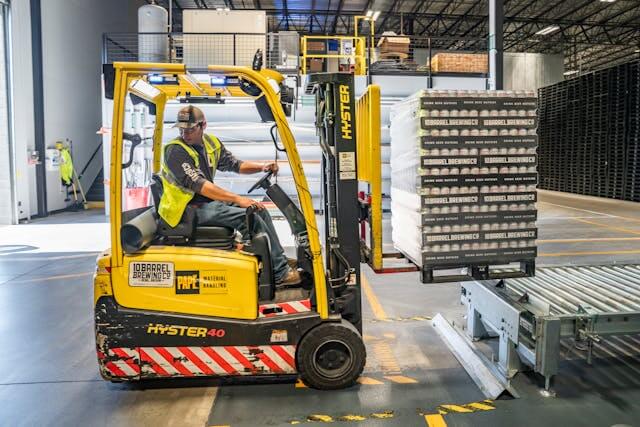How do you allocate the maintenance and repairs if the lease agreement does not do this?
In theory, the tenant is responsible for carrying out minor maintenance of the leased premises if such maintenance has become necessary from the use of it, for repairing damage that it had caused (Article 1735 old Civil Code), and for carrying out rental repairs (Article 1754 old Civil Code). The last category concerns minor repairs of limited damage that are assumed to be the consequence of the tenant’s fault or negligence, for example, when it misused the leased premises or did not maintain it properly. According to the law, customary use determines whether a repair constitutes a rental repair. The law also gives several (archaic) examples, such as repairs to fireplaces, fireplace firebacks, slates, chimney mantles, doors, window frames, and bedroom floors and floor tiles if only a few are broken.
The landlord, on the other hand, must provide proper maintenance in all aspects to the leased premises (Article 1720, first para., old Civil Code). Moreover, it must maintain the property in such a state so that it can continue to be used for the purpose for which it is rented under the tenancy agreement (Article 1719, 2° old Civil Code). It must carry out all necessary repairs throughout the term of the tenancy, except for the repairs for which the tenant is responsible (Article 1720, second para., old Civil Code). The maintenance and repairs for which the landlord is responsible therefore fall under the residual category. The landlord is also responsible for the rental repairs that are the consequence of age, wear and tear, or force majeure (Article 1755 old Civil Code).
Under an ordinary tenancy, deviations from this allocation of responsibilities in favour of the landlord are possible. In reality, regarding repairs, especially in a B2B context, lease agreements typically refer to the provisions on usufruct and Articles 605-606 old Civil Code in particular, which entail an allocation that is more favourable to the landlord.
Difference between the usufructuary’s duty to maintain and repair and that of the bare owner under the old Civil Code
Articles 605 and 606 of the old Civil Code governed the allocation of the repairs in the event of a usufruct. The usufructuary was responsible for maintenance repairs, whereas the bare owner had to carry out major repairs. Consequently, the law gave an exhaustive list of the major repairs:
- repairs to the party walls and the vaults;
- renewal of the beams and the entire roof; and
- renewals of dikes and of the supporting and enclosing walls in their entirety.
Major repairs that had to be done because of the usufructuary’s failure to carry our maintenance repairs since the start of the usufruct were the usufructuary’s responsibility.
Because building methods evolved, the list of the major repairs became outdated rather quickly, and this led to a lot of uncertainties. The Court of Cassation therefore held in 1970 that Article 606 of the old Civil Code had to be given an evolutionary interpretation so that new, modern structural elements could be taken into account. The Court described major repairs as “major renewal and renovation works that are aimed to attain the general stability and preservation of the entire building and that are really an exception in the very existence of the property and the costs of which are usually deducted from the capital.” [1]
The maintenance repairs for which the usufructuary is responsible therefore fell under the residual category according to the old law. By contrast, as described above, these are the maintenance and repairs for which the landlord is responsible under tenancy law. Consequently, the landlord is responsible for more than just the major repairs if the lease agreement does not limit them. So many B2B lease agreements that do not fall under the scope of the protective legislation stipulate that the landlord is responsible for only the major repairs that are defined in Articles 605 and 606 of the old Civil Code and the tenant is responsible for all other repairs.
The usufructuary’s duty to maintain and repair and that of the bare owner under the new Civil Code
To prevent some lists from becoming outdated, the new property law uses open-ended categories instead of lists. This has several important effects.
Article 3.154 gives the term major repairs an open-ended definition. These are repairs that relate to the structure of the property or to its inherent elements or the costs of which clearly exceed the value of the benefits from the use and enjoyment of the property. The bare owner must carry out these repairs after consulting with the usufructuary, who may not seek any compensation for inability to use or enjoy the property. There are exceptions to this rule, however:
- the major repairs that relate to the building works that the usufructuary made and plantations it placed; and
- the repairs that are attributed solely to the usufructuary.
Because the new property law removed the list of major repairs, the maintenance and repairs for which the usufructuary is responsible no longer form part of the residual category. The usufructuary does not even have to perform all the maintenance tasks. Article 3.153 states that the usufructuary is obliged to carry out maintenance repairs only to keep things in a proper state in a short or long term that are necessary to safeguard the value of the property, subject to the normal wear and tear, age, or force majeure.
Because of the new, updated description of the usufructuary and the bare owner’s duty to repair, the difference in allocating the maintenance and repair responsibilities has become more vague—unless parties lay down specific supplementary rules or clarifications in their agreement.
The most appropriate allocation of responsibilities for your lease agreement
As already mentioned, in an ordinary tenancy, especially in a B2B context, it is possible to designate contractually who is responsible for what maintenance and repair works.
If you wish to restrict the landlord’s duty to maintain and repair to only the major repairs in the sense of Article 606 old Civil Code, it is not enough to refer to Article 3.154, §1 Civil Code from now on. To achieve the same allocation of responsibilities, you should consider excluding the repair works whose costs will obviously exceed the value of the benefits from the use and enjoyment of the property.
Naturally, it is also possible to limit the landlord’s duty to maintain and repair even more. Instead of referring to Article 3.154, §1 Civil Code, you can, for example, give an exhaustive list of what repairs the landlord is responsible for, such as repairs to the roof, the walls, and the foundation. In this way, his duty to repair does not extend to the entire building structure and all inherent elements.
Another possibility is to impose the obligation on the tenant to repair the damage caused by age, wear and tear, or force majeure.
In this respect, it should be noted that such deviations from ordinary tenancy law are interpreted restrictively in favour of the tenant. If there is any deviation from ordinary law, we therefore recommend that you accurately describe the repair for which the tenant is responsible and to what extent.
If, to the contrary, you wish to keep the lease agreement as tenant-friendly as possible, you should state that the applicable law is ordinary tenancy law and potentially add several tenant-friendly clauses. In this way, it is possible to list the repairs exhaustively, which provides greater legal certainty.
[1] Cass. 22 January 1970, RW 1969-70, (1535) 1539.






